Robôs Industriais - O Guia Definitivo
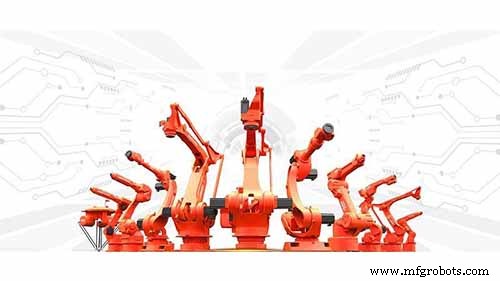
Robôs industriais se referem a um tipo de robô usado exclusivamente como robôs de manufatura . Eles são automatizados e programáveis com a capacidade de movimento ao longo de três ou mais eixos. Em suma, eles têm braços robóticos que pode girar ao redor. O trabalho típico que esses robôs industriais estão envolvidos em incluem soldagem, pintura de outras máquinas, montagem, embalagem e rotulagem, entre outras tarefas.
Em 2020, havia cerca de 1,64 milhão de robôs em operação no mundo todo, em vários setores. A história dos robôs industriais remonta a 1937, quando a primeira forma conhecida de um robô era um dispositivo semelhante a um guindaste montado com peças do Meccano e movido por um motor.
Estima-se que até o ano de 2030, os robôs industriais terão tirado mais de 20 milhões de empregos de pessoas. Empresas de fabricação de robôs estão trabalhando arduamente para apresentar novas inovações para tornar este sonho realidade.
Índice
O que é um robô industrial?
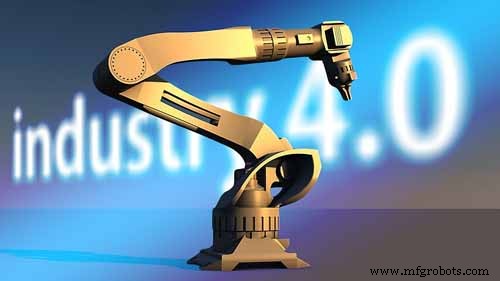
Fonte:Pixabay
Um robô industrial é um dispositivo mecânico programável com um braço robótico que pode ser usado no lugar de um ser humano para realizar tarefas que podem ser consideradas muito arriscadas ou muito repetitivas, mas com um nível de precisão muito maior. Eles são máquinas elaboradas com peças móveis, cada uma feita para perfumar uma função única.
Embora o custo de fazer um robô industrial tem sido alto, há um benefício maior ao usá-los em vez de humanos, pois eliminam a necessidade de pagar os salários dos funcionários. Além disso, eles não se cansam, o que significa que podem funcionar por dias a fio entre as temporadas de manutenção de vez em quando.
Tipos de robôs industriais
Conforme mencionado anteriormente, os robôs industriais são projetados para funções específicas. Um robô programado para lidar com soldagem não pode lidar com pintura ou embalagem. Essas variações nas funções ajudam a separar robôs industriais em diferentes tipos. A partir de agora, os robôs industriais podem ser divididos em tipos principais que incluem o seguinte.
Robôs articulados
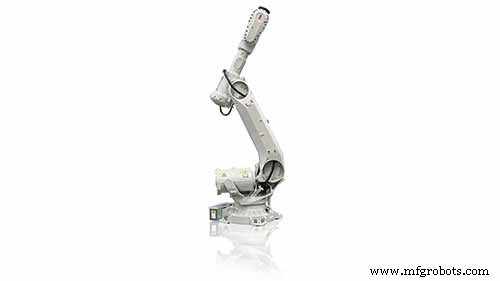
Fonte:Pinterest
Os robôs articulados são os tipos de robôs industriais mais comuns. Eles têm um braço de robô de fábrica projetado na forma de um braço humano conectado na articulação por uma articulação de torção. Os elos do braço estão ligados entre si por meio de juntas rotativas que geralmente variam de duas a dez.
As articulações proporcionam liberdade de movimento, permitindo aos braços do robô para virar em qualquer direção sem estalar. Em resumo, os braços de robô articulados têm seis juntas, tornando-os os mais flexíveis de todos os robôs industriais. Daí a razão pela qual são os mais utilizados.
Prós
Contras
Aplicação industrial
Robôs cartesianos
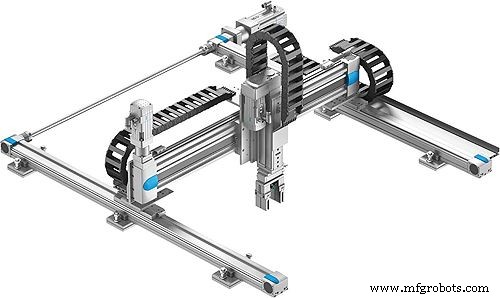
Fonte:Pinterest
Robôs cartesianos, também chamados retilíneos / robô pórtico , são robôs industriais tipos que são configurados de forma retangular. Eles vêm com três juntas prismáticas que fornecem o movimento linear que é efetuado quando ele desliza sobre seus três eixos perpendiculares. Em outras ocasiões, eles são equipados com um punho para possibilitar o movimento rotacional. Os robôs cartesianos são amplamente usados por fabricantes de automação industrial , principalmente pela sua simplicidade e flexibilidade, o que os torna ideais para tarefas únicas.
Prós
Contras
Aplicação industrial
Robôs SCARA
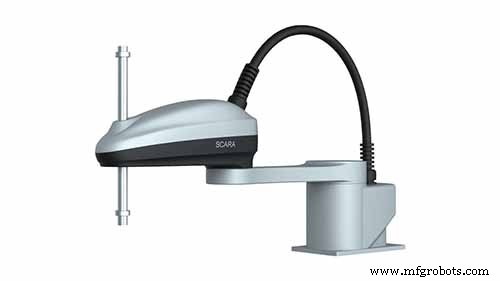
SCARA é um acrônimo para Selective Compliance Assembly Robot Arm, e é um robô industrial com um envelope de trabalho em forma de donut. Um braço de robô SCARA tem duas juntas paralelas que fornecem complacência em um só lugar. Seus turnos rotativos são posicionados verticalmente com o efetor final afixado no braço que se move horizontalmente.
Um robô SCARA é especialista em movimentos laterais e, por este motivo, são usados principalmente como um robô de montagem . Comparados aos robôs cilíndricos e cartesianos, os robôs SCARA são muito mais rápidos e de integração mais fácil.
Prós
Contras
Aplicação industrial
Robôs Delta
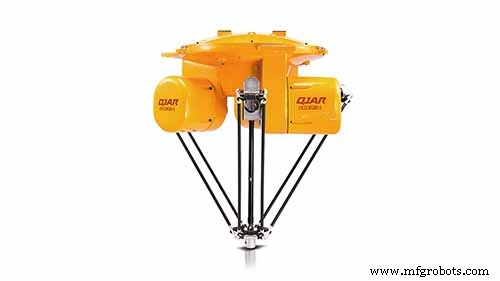
Os robôs Delta são feitos de articulações paralelas que são conectadas por uma base comum. Também chamados de robôs Parallel Link, eles são muito mais fáceis de controlar porque cada junta é posicionada em relação ao efetor final. Isso dá aos robôs Delta uma alta velocidade de movimento, tornando-os ideais para o tipo de trabalho que envolve a fabricação de alto volume.
Os robôs Delta possuem um envelope em forma de cúpula, um design que reduz o peso dentro dos braços, que em última análise é a razão da alta velocidade. Eles são usados principalmente para automação de coleta e colocação . Eles são programados para trabalhar em perfeita sincronização com outras máquinas para aproveitar a velocidade; caso contrário, seria um desastre se algo como uma correia transportadora alimentando o robô com materiais um pouco mais lento.
Prós
Contras
Industrial Application
Polar Robots
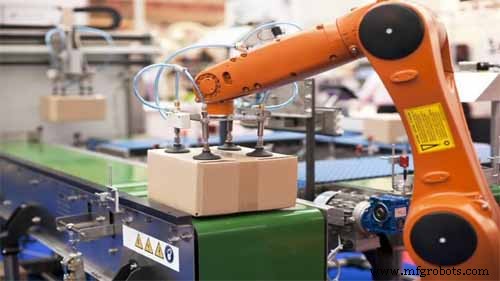
Source:blog.technavio.com
Polar robots are made of a twisting joint that connects the arm with the base and two rotary joints plus a single linear joint. Due to their spherical work envelope, Polar robots are also called Spherical robots. Another unique design feature in these robots is their centrally pivoting shaft and an extendable, rotating robotic arm . It also has a gun turret configuration that covers a very large volume of space when operational.
Pros
Cons
Industrial Application
Cylindrical Robots
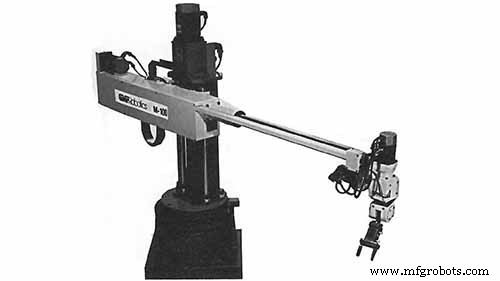
Source:industrial-electronics.com
Cylindrical robots possess a single rotary joint at their bases and another prismatic joint connecting the inks. They have a cylindrical working space, hence their name, that comes with a pivoting shaft and an extendable robotic arm that moves by sliding vertically. This unique movement affords the robots, both vertical and horizontal movements.
The arm is also designed to allow the robot to reach tight work envelopes without any loss of speed or repeatability. Cylindrical robots are ideal for tasks that involve the picking or materials from the ground thanks to their advanced pick and place robotic arm.
Pros
Cons
Industrial Application
Cobots
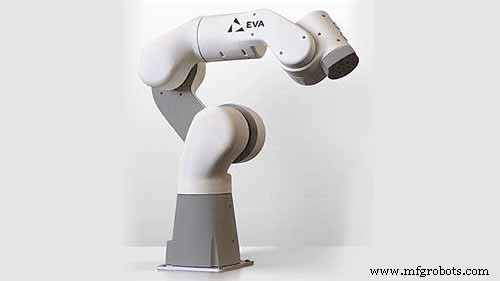
Source:Pinterest
There is a more recent version of industrial robots in use today that is worth mentioning here. Collaborative Robots are industrial robots that can work alongside humans without any need for stringent safety barriers. They have a rounded design and are equipped with special sensors that give them the ability to always know where humans are to give them the space to assist workers.
Pros
Cons
Industrial Application
How Do Robotic Arms Work?
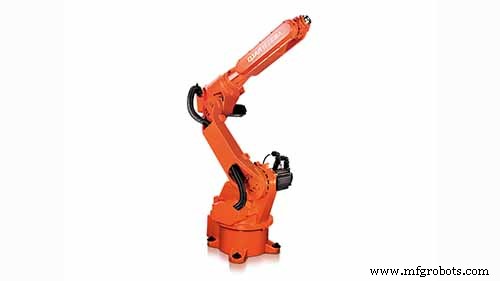
Robotic arms are designed based on the human arm, and they work almost in the same manner. How a robotic arm works depends on the task it has been designed for. In general, however, there is a specific way that all robotic arms function. They all depend on joints for movements and are equipped with other features that make this possible, sensors, for instance.
To get a better view of how they work, we must know the industrial robot parts that make up the robotic arm. They include the following:
Controllers
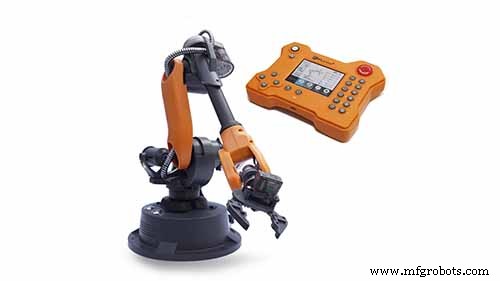
Source:Pinterest
Industrial robot controllers are the brains of the robot. They are the processors that carry the executable program that determines the movements that the robotic arm makes. They can either be automatically programmed or allow for manual operations by a qualified technician. In some places, they take the form of huge computer systems, and at times they are reduced to a simple joystick.
Arms
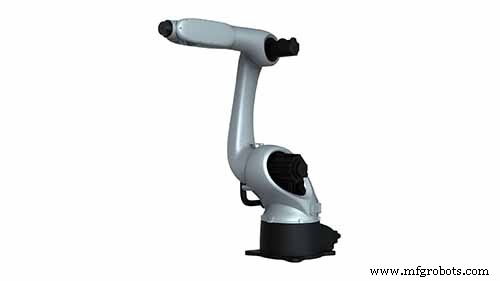
This is the part that does the actual work. It consists of three main parts:the shoulder, the elbow, and the wrist, just like humans. All these three parts are linked to each other through axes and joints controlled by the central processor, the controller. Each part has to move in relation to the other for efficiency to be attained.
End Effector
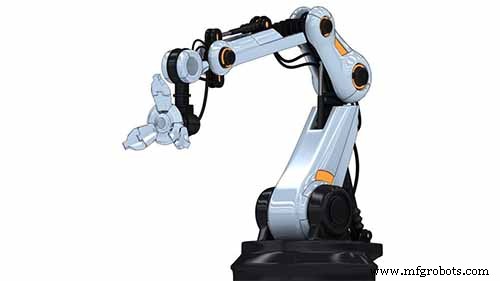
Source:Pinterest
This is the part that performs the functions of the hand. Most times, A robot end effector is made up of two claws that hold objects by closing and opening automatically. Some can spin and make maneuvering movements when holding or moving objects.
Drives
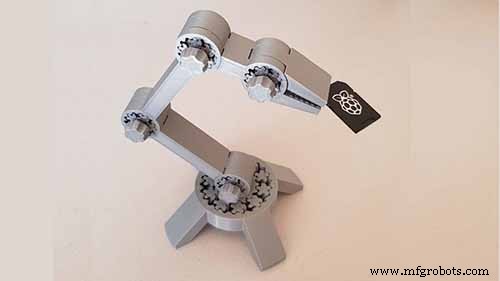
Source:Pinterest
These are the motors between the joints that control the maneuvers and the movements of the robot arms . They usually use belts that are replicas of the ones found in car engines.
Why Do You Need Robotic Arms?

Source:Pinterest
Industrial robotics companies have been on the rise in the last two decades, and as time progresses, so are the technological advancements in the robot world. Soon, we will have robots performing all the work around us. As much as they are causing disruptions as far as human labor is concerned, there is no denying that robots have made life much easier.
The following are some of the advantages of using industrial robotic arms .
Improved Worker Safety
Construction jobs are labor-intensive, and they involve a lot of heavy machinery that can pose a danger to human workers. Being exposed to harmful chemicals can also have a detrimental impact on people’s health. Industrial robotic arms have greatly reduced this risk as they can work in any condition since they are inanimate machines. They can handle repetitive work without losing focus even for a second.
Decreased Costs
Although the initial cost of acquiring a robot can be high, the long term benefits are huge. On top of scrapping the need for salaries, time offs, and other accruing benefits, robots are not prone to errors. The losses that factories have suffered due to the destruction of machines and products out of human negligence are things of the past.
Increased Productivity
What used to take days to achieve can now be attained within hours. The thing with human labor, it is prone to burn out, and rest is necessary. The only way you can keep production running for 24hrs is through shifts. Robots, on the other hand, can run for days without taking a single break. An intelligent assembly work cell can put in work that is equivalent to 4 people working at the same time.
Better Product Quality
Humans cannot replicate the accuracy and precision involved when robots are part of the production process. Robots used in manufacturing are guided by laser-sharp guidance technologies, which means every cut and measurement they make is right on the money. Articulated robots , for example, are the embodiment of accuracy in the robot world. Better accuracy translates to products with higher qualities.
Reliability
Industries that use robots in manufacturing have seen production increase exponentially. As long as they are serviced regularly, they will keep doing consistent work no matter how harsh the conditions may be. The same thing cannot be said of human workers prone to sickness and fatigue, which ultimately affects their output.
What Industries Use Industrial Robots?
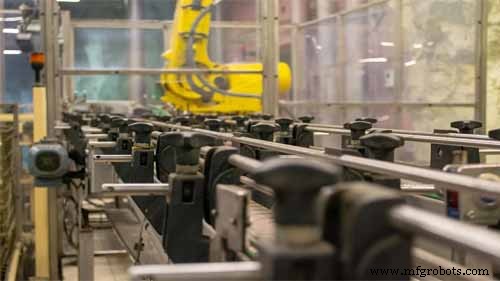
Source:Pixabay
A lot of manufacturers have switched or are in the process of fully automating their production process. The reasons for this are many, but the main one is that robots are reliable, reduce the cost of paying salaries, and save money that can be redirected to other things. The following are some of the industries that utilize robotic arm applications in their manufacturing processes.
Automotive Industry
Robotics in automotive manufacturing were among the very first to be adopted as far as industrial robotics go. As of now, you will not find any car maker that does not employ a car manufacturing robots for over 75% of its production. The automotive industry accounts for about 30% of the total industrial robotic arm installations. The most commonly used robot by car manufacturers is the ABB IRB 6640 that is good for welding car frames into place.
Aerospace industry
Just like the automotive industry, the making of planes requires a lot of robot power. The demand for air travel is increasing the world over, and to meet this demand, there is a need to manufacture more airplanes faster than before. Industrial robots are the answer to this need as they are faster and can be programmed to handle any kind of task. Applications like motor parts painting , sealing, drilling, and welding are some of the things that are handled by automated machines.
Electronics Industry
Electronics are part of our lives, and we cannot do without them. Their manufacture involves a lot of components whose assembly can be easily lost to humans. Industrial robots are now being heavily used in the manufacture of electronics as they are more adept at dealing with tiny and sensitive parts of electric appliances. The use of cleanroom robots, for instance, has greatly improved the quality of electronics as they prevent dust from ever coming into contact with the internal parts during assembly.
Food Industry
Food packaging is now handled exclusively by robots. In some places, it is even part of the requirements to employ the services of robots in a sensitive job that is the packaging and warehousing. The advantages of using robots in food processing is that there is less chance of contamination since robots are precise and fast. Putting food into the right portions and sizes has also become the hallmark of robotic food processing.
Medical and Pharmaceutical Industry
The sorting, bottling, dispensing, and inspection of medications is now a preserve of industrial robots . Robots have now been programmed to measure the exact amount of drugs on the last milligram. Robots in the medical and pharmaceutical industry have made it easier to handle drugs in a better way that avoids excessive wastage and contamination.
Delicate medical devices like surgical tools are now manufactured to the exact sizes as needed using medical robots that are changing the world. When medical tools are compromised, it makes it harder for doctors to treat their patients properly.
How Much Does A Robotic Arm Cost?

Source:Pixabay
Robots used to cost a lot more in the past than they do right now. Mass production has made it possible for the prices to come down a little, but they are still on the higher end of the budget. In the present market, the average i ndustrial robot price is about $25,000, but it can rise to over $400,000 depending on the model and the size.
A robotic arm price also tends to go higher as you add more peripherals and extra features. Application-specific additions, like collision sensors and safety cages, which are a necessity, can double the initial price of the whole machine.
As an interested buyer, you can either go for a brand new robot or a cheap industrial robot arm that has been used before. One advantage of going for a second-hand robot is that you save on the cost, although you will experience some little mishaps along the way.
The Best Programmable Robotic Arms of 2020
As the use of robotic arms across all industries rises, models are being created to handle application-specific tasks for various manufacturers. The following are the best programmable industrial robotic arms of 2020.
DOBOT Magician Educational Programming Robot
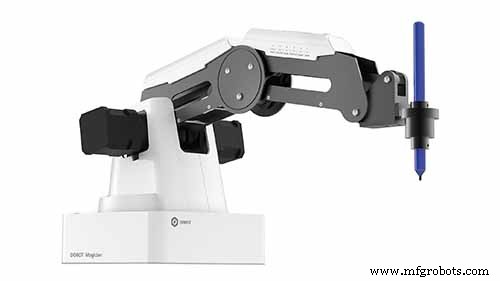
Source:Pinterest
This is a robotic arm that is designed for multi-tasking. It can handle 3D printing, laser engraving, pick and place, drawing, and writing machines. It is equipped with over 20 coding languages, while at the same time, it is simple enough to be used by a beginner level individual.
LewanSoul LeArm 6DOF Full Metal Robotic Arm
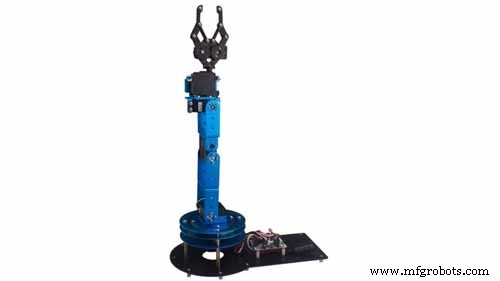
Source:Amazon
This is an arm that is powered by a servo to effect movement flexibly. It has a metal claw that is strong enough to handle heavy loads in any direction. Control of the robot can be done wirelessly and, at the same time, can be controlled through a smartphone.
QJRB800-1 Robot Arm
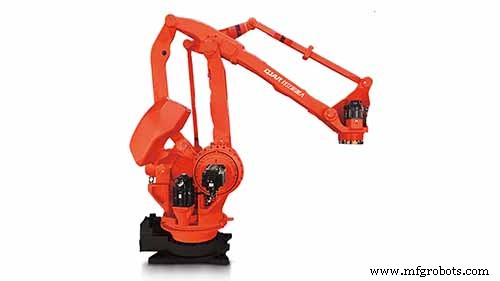
This is a robotic arm created by EVS that has a maximum payload of about 1700 pounds. The whole robot itself with the other parts combined is about 5600 pounds which gives a very stable foundation for any heavy lifting task common in most manufacturing industries.
Owi Robotic Arm Edge
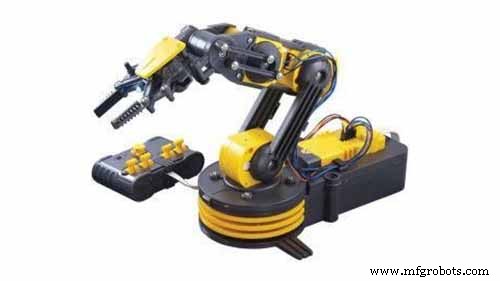
Source:Pinterest
This is a robotic arm equipped with five joints controlled by a wired-5 switch controller that can be operated remotely. D batteries can power the robot at the same time it can be powered by AC power. It has a base rotation of 270° and has an extended life on the gearbox.
How To Choose Industrial Robotic Arms
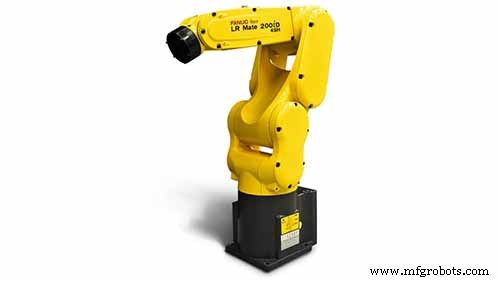
Source:Pinterest
When it comes to choosing a robot arm, there are things you must consider first.
Application
Just because it is a robotic arm does not necessarily mean that you can use it to open your beer, each robotic arm is designed for a specific application. An arm designed for painting cannot be used as a polishing arm or vice-versa. Unless the robotic arm is a multi-purpose one, then you are stuck with one function robotic arm.
Payload
Payload refers to the maximum amount of load that the robotic arm can handle. If you are dealing with a heavier load like industrial packaging, then you will need to go for a big robot arm that can handle heavier loads with a simple pick and place automation .
Degree of Freedom
The movement a robotic arm can maneuver depends on the number of axes. The more the number of axes, the more flexible the arm will be in terms of movement. Bigger robotic arms require more axes as it takes more effort for them to turn.
Speed
If you are dealing with repetitive tasks, then you will be best served with a high-speed robot arm that is as fast as possible, an articulated robot is an example of a fast robot that is suitable for such a task. Some robotic arms come with the options that allow the controller to adjust the speed.
Cost
You can only get what you can afford. If you’re dealing with high volume work like manufacturing, you will need more than one robotic arms, which will cost you a lot. If all you are looking for is a simple contraption for home use, then a simple low-cost robot arm is what you should be going for.
Conclusion
Industrial robot technology is becoming indispensable as time goes by. The manufacturing industry is as good as done with human labor already as we speak. The little left of human labor is reduced to maintenance and the controlling of these robots when the need arises. Someday, in the future, robots will be the standard feature in all industries around the world.
Robô industrial
- Robôs Articulados:Guia para o Robô Industrial Mais Familiar
- Robôs industriais:o guia nº 1 de robótica para todas as indústrias
- Principais fornecedores de robôs industriais no Reino Unido
- Os 10 maiores fabricantes de robôs industriais em 2020
- Os 7 principais robôs industriais que você deve conhecer
- Robôs de Inteligência Artificial
- Automação industrial
- O que é AIaaS? O melhor guia para IA como serviço
- O guia definitivo para os diferentes tipos de acoplamentos
- Seu guia definitivo para os melhores produtos agrícolas industriais



